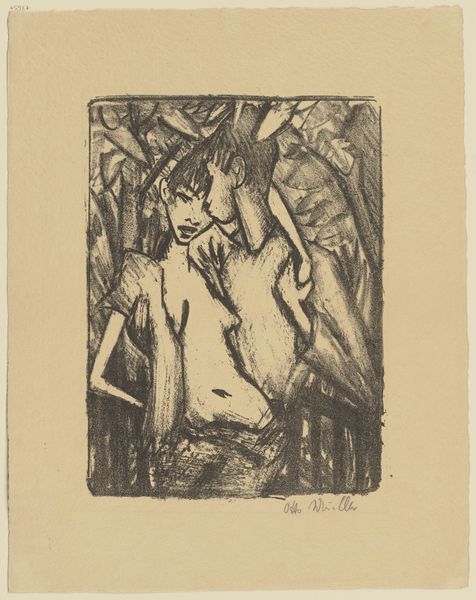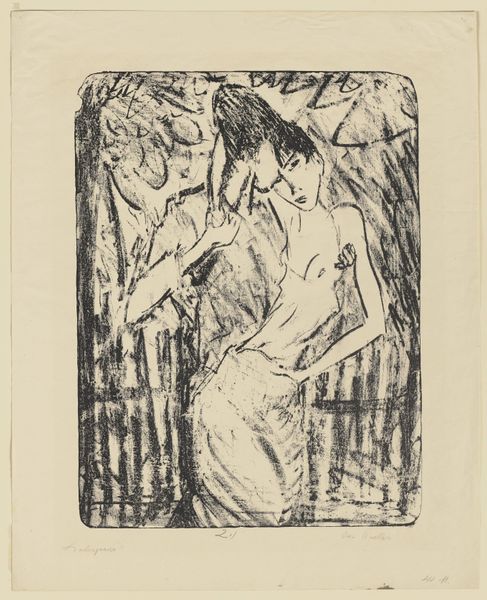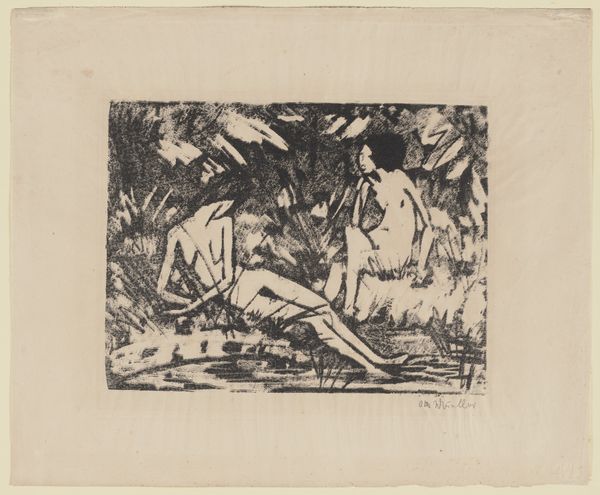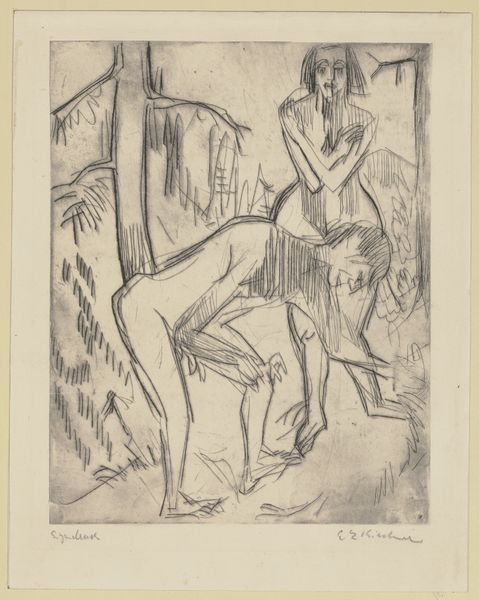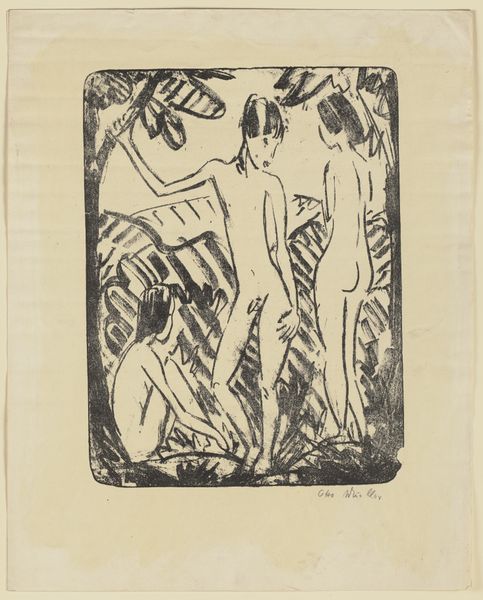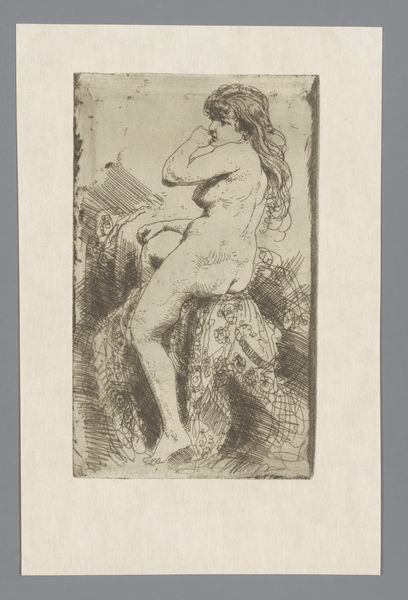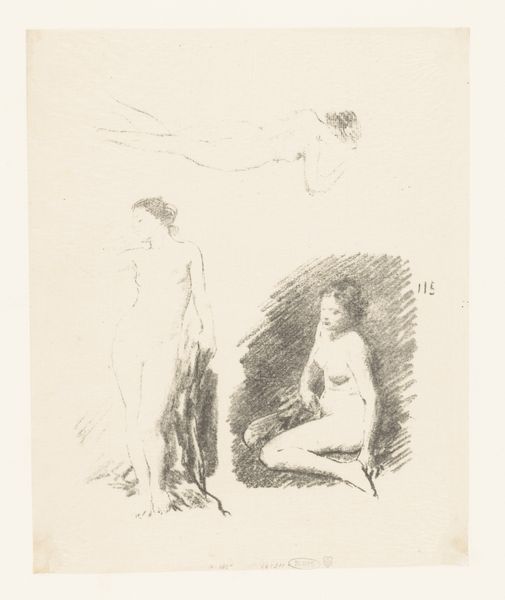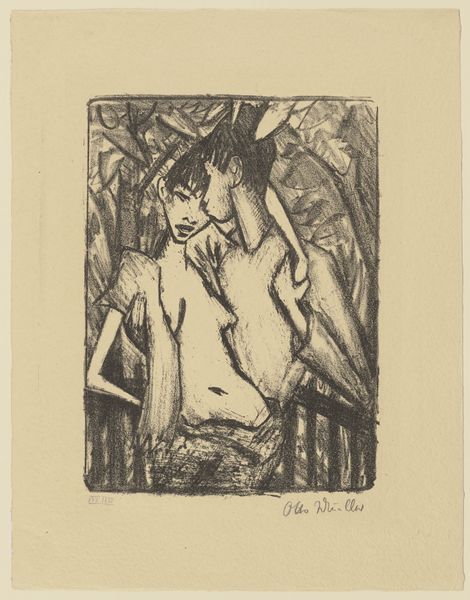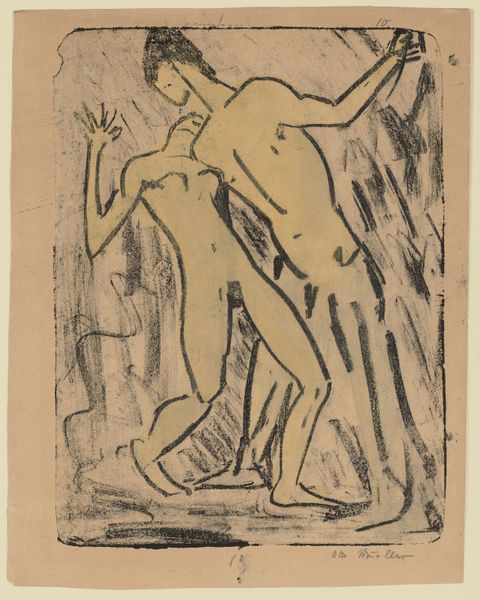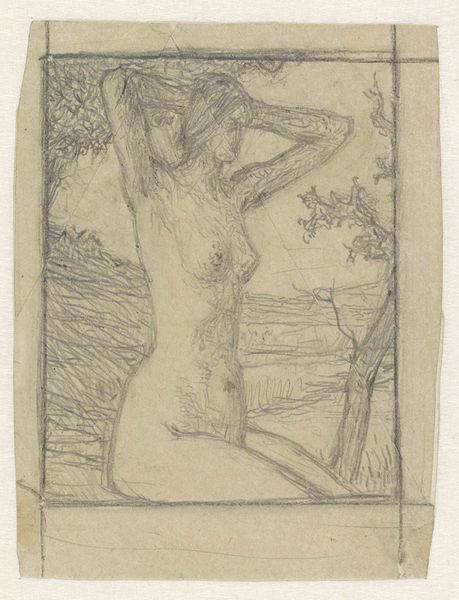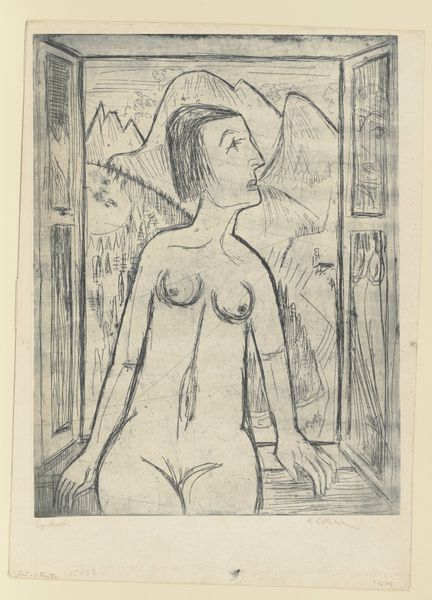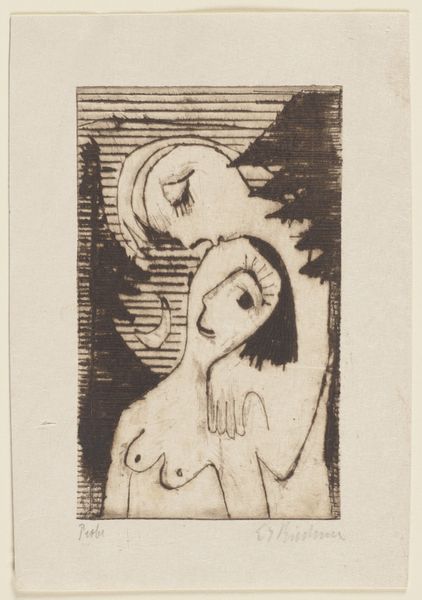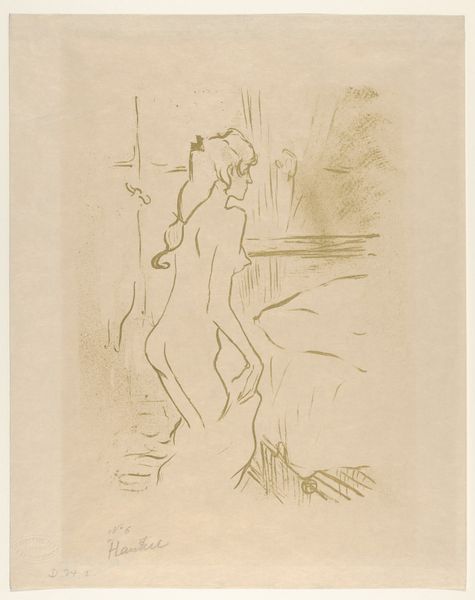
Sitzende, von Blattwerk umgeben (helle Fassung)Aus der Mappe „Arno Holz zum 60. Geburtstag, gewidmet von deutschen Künstlern“, Berlin_ Fritz Gurlitt Verlag, 1923 1923
0:00
0:00
drawing, charcoal
#
drawing
#
pen sketch
#
landscape
#
figuration
#
expressionism
#
charcoal
#
nude
Copyright: Public Domain
Curator: There’s a rather haunting stillness about this one, don't you think? Editor: It does evoke a particular mood. This drawing is titled "Sitzende, von Blattwerk umgeben (helle Fassung)," which translates to "Seated Woman Surrounded by Foliage, Light Version.” It was created by Otto Mueller in 1923. The materials listed include charcoal and drawing. What do you make of that? Curator: The heavy charcoal feels incredibly important here, almost sculptural. It adds weight and tactility to both the figure and the foliage, and I'm curious how his social circle might have impacted his chosen materials at this point in his practice. Editor: Interestingly, this print comes from a portfolio of works dedicated to the 60th birthday of Arno Holz, a German writer. Knowing that it was a gift to an author from fellow artists illuminates the potential networks of art and literature during that time and highlights this kind of mutual recognition across cultural fields. What sort of context was Mueller working in? Curator: Indeed. In 1923, Germany was in economic and social turmoil following the First World War. The choice of simple materials like charcoal might reflect economic constraints, or perhaps a deliberate turn away from ostentation, but the choice would undoubtedly have helped with distribution in a fraught era. Editor: I agree. And if you consider the subject—a nude figure amidst foliage—it echoes back to classic themes, and a public desire for these things could explain its style given this chaotic era. What do you take from it? Curator: It definitely suggests a longing for nature, perhaps for simpler times. Though I do feel like that’s at odds with the charcoal used here, there's such raw, earthly quality about that specific medium. Editor: That's a very persuasive reading. Thinking about the broader impact, an artwork like this speaks volumes about art's function within society during the Weimar Republic—a period of radical experimentation, where the artist is still commenting on form, nature, the nude... Curator: Precisely. It's this duality between the real and the ideal that keeps it fascinating for me. Editor: It's those nuances that prompt us to keep reevaluating history and consider all factors influencing an artwork.
Comments
No comments
Be the first to comment and join the conversation on the ultimate creative platform.
